trailer...
Doom 3
From Wikipedia, the free encyclopedia
| Doom 3 | |
|---|---|
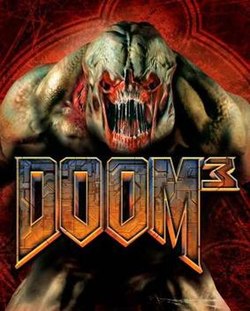 The box art for Doom 3 displays a Hell-Knight against the background of a pentagram. | |
| Developer(s) | id Software Splash Damage (additional multiplayer)[1] Vicarious Visions (Xbox version) Aspyr Media (Mac OS X version) |
| Publisher(s) | Activision |
| Distributor(s) | Activision (retail) Steam (online)[2] |
| Designer(s) | Tim Willits[3] |
| Programmer(s) | John Carmack Robert A. Duffy |
| Artist(s) | Adrian Carmack Kevin Cloud |
| Writer(s) | Matthew J. Costello |
| Series | Doom |
| Version | 1.3.1 (February 2, 2007) |
| Platform(s) | Windows, Linux, Mac OS X, Xbox |
| Release date(s) | Windows (retail)[4] Linux
Xbox[5] Windows (Steam)[6] August 3, 2007 |
| Genre(s) | First-person shooter |
| Mode(s) | Single-player, multiplayer |
| Rating(s) | |
| Media/distribution | Download, optical disc |
| System requirements | |
The game is a reboot of the Doom franchise, disregarding the storylines of the previous Doom video games. Doom 3 is set in 2145 on Mars, where a military-industrial conglomerate has set up a scientific research facility to develop fields such as teleportation, biological research and advanced weapons design. However, the teleportation experiments inadvertently open a gateway to Hell, resulting in a catastrophic invasion by demons. The player, an anonymous space marine, must fight through the base and find a way to stop demons from Hell attacking Earth.[8] Doom 3 features an award-winning game engine, id Tech 4, which has since been licensed out to other developers.[9]
The game was a critical and commercial success for id Software; with more than 3.5 million copies of the game sold, it is the most successful game by the developer to date.[9][10] Critics praised the game's graphics and presentation,[11] although reviewers were divided by how close the gameplay was to that of the original Doom, focusing primarily on simply fighting through large numbers of enemy characters.[12] The game was followed by Resurrection of Evil, an expansion pack developed by Nerve Software in April 2005, while a Doom film loosely based on the series was released in October 2005. A series of novelizations of Doom 3, written by Matthew J. Costello, debuted in February 2008.[13] The franchise is to continue with Doom 4.
Contents[hide] |
[edit] Gameplay
[edit] Single-player
Doom 3 is a story-driven action game played from a first-person perspective. As with previous Doom games, the main objective is to successfully pass through its levels, defeating a variety of enemy characters intent on killing the player's character. Doom 3's more story-centered approach, however, means that the player often encounters friendly non-player characters, who provide key plot information, objectives and inventory items. The game incorporates ten weapons for the player's use to survive, including conventional firearms and explosives such as a submachine gun, shotgun and grenades, experimental plasma weaponry, and the traditional BFG 9000 and chainsaw weapons of the Doom franchise.[14] Enemies come in multiple forms and with different abilities and tactics, but fall into two broad categories of either zombies or demons. Zombies are humans possessed by demonic forces, who attack the player's character using their hands and melee weapons or a variety of firearms, while demons are creatures from Hell, most of which attack using claws and spines, or by summoning plasma-based fireballs.[15] The corpses of demons are reduced to ashes after death, leaving no trace of their body behind.The game's levels are fairly linear in nature and incorporate several horror elements, the most prominent of which is darkness.[16] This design choice is not only intended to foster feelings of apprehension and fear within the player, but also to create a more threatening game environment in which the player is less likely to see attacking enemies.[16] This aspect is further enhanced by the fact that the player must choose between holding a weapon and holding the flashlight, forcing the player to choose between being able to see and having a readied weapon upon entering a room, which consequently leads to a more deliberate pace for the player.[16] In addition, the levels are regularly strewn with corpses, dismembered body parts and blood, sometimes used in conjunction with the game's lighting to disorient the player.[16]
Frequent radio transmissions through the player's communications device also add to the atmosphere, by broadcasting certain sounds and messages from non-player characters meant to unsettle the player. Early in the game, during and directly after the event that plunges the base into chaos, the player often hears the sounds of fighting, screaming and dying through their radio transmitter. The ambient sound is extended to the base itself through such things as hissing pipes, footsteps, and occasional jarringly loud noises from machinery or other sources. Often ambient sounds can be heard that resemble deep breathing, unexplained voices and demonic taunting from the game's antagonists.[8]
Early in the game, the player is provided with a personal digital assistant (PDA). PDAs contain security clearance levels, allowing the player to access certain areas that are otherwise locked and off-limits. Additionally, the PDA can be used to read e-mails and play videos that the player's character acquires during the game. Whenever the player picks up any of the other PDAs found throughout the game, its contents are automatically downloaded to the player's own device. Other PDAs often contain e-mails and audio logs for other characters, which can provide useful information such as storage or door key codes, as well as significant plot details.[17]
[edit] Multiplayer
Doom 3 was released with a four-player multiplayer element, featuring four game modes. However, the game's community created a modification to boost this to eight or sixteen players.[11][18][19] The Resurrection of Evil expansion would later officially increase the player limit to eight. The four game modes are all deathmatch oriented. The standard deathmatch game mode involves each player moving around a level, collecting weaponry and killing the other players, with the player with the highest kills when the time runs out winning. A team variation of this involves the same principle. The third game mode is "last man standing", in which each player has a limited amount of respawns, with players losing a life when they are killed. Eventually, all but one player will be eliminated from the game, leaving the survivor as the winner. The final game mode is "tournament", in which two players fight each other while the other players watch as spectators. The victor of the battle remains in the arena, facing each other player one at a time until the winner of previous rounds is defeated. The loser then moves to the spectators and the new winner remains to fight the next player.[20] The Xbox version of Doom 3 also incorporates an additional two-player co-operative mode for the main single-player game.As of April 15, 2010, online multiplayer for original Xbox games and downloadable content is no longer supported.
[edit] Synopsis
[edit] Setting
See also: Union Aerospace Corporation
Doom 3 is set in the year 2145. Much of the game's story and dialogue was created by author Matthew J. Costello.[8] According to the game's backstory, the Union Aerospace Corporation (UAC) has grown to become the largest corporate entity in existence, and has set up a research facility on Mars. At this base, the UAC are able to conduct research into several scientific areas, including advanced weapons development, biological research, space exploration and teleportation. Due to the facility's position on Mars, the UAC can perform its operations outside of legal and moral boundaries.[21] As the player progresses through the game, they learn that the employees on the base are unsettled due to a large amount of incidents involving hearing voices, unexplained sightings and increasing cases of paranoia and insanity, often leading to fatal accidents with the facility's machinery. Rumors regarding the nature of experiments in the UAC's Delta Labs division are especially prevalent among the base's employees.[edit] Characters
There are five main characters in Doom 3. The player assumes the role of an anonymous space marine corporal who has just arrived on the UAC's Mars base. The player's non-comissioned officer in-charge is Master Sergeant Thomas Kelly, voiced by Neil Ross,[22] who gives the player objectives and advice over the player's radio for the first half of the game. Taking an antagonistic role in the story is Doctor Malcolm Betruger, head scientist of the UAC's enigmatic Delta Labs division, who is revealed to be working in collaboration with the forces of Hell to cause the subjugation of humanity. Betruger's demonic voice, provided by Philip L. Clarke,[22] frequently taunts the player as the game progresses. The final two principal characters are Elliott Swann and Jack Campbell. Swann, voiced by Charles Dennis,[22] is a representative of the UAC's board of directors, sent to check up on Betruger's research as well as investigate the rising number of accidents on the Mars base after a request for assistance from a whistleblower. He is almost always accompanied by Campbell, another space marine who acts as Swann's bodyguard and is armed with a BFG 9000. Campbell is voiced by Andy Chanley.[22] Swann and Campbell are often shown in the game to be a few steps ahead of the player, but cannot be reached and directly communicated with until late in the game.[8] The game also incorporates a large host of minor characters who add details to the story or assist the player in certain segments. The player encounters multiple scientists involved in the various research and development programs and archaeological digs through the UAC base, as well as fellow marines and security guards. Civilian employees engaged in bureaucratic work and maintenance workers are also seen.[edit] Plot
The story of Doom 3 is conveyed through in-game dialogue and cut scenes, as well as e-mails, audio logs and video files found throughout the game. The game opens with Elliott Swann and Jack Campbell arriving at Mars City, the main access to the UAC's Mars base, disembarking from an Earth transport, with the player's anonymous marine just behind them. Swann and Campbell have a heated conference meeting with Malcolm Betruger as the first part of investigating the incidents and complaints about the facility,[23] while the marine heads to Master Sergeant Thomas Kelly for orders. Kelly gives the marine instructions to find a scientist from the Delta Labs who has gone missing.[24] The marine finds the scientist in a nearby decommissioned communications facility, where he is frantically trying to send a warning to the UAC on Earth about Betruger's teleportation experiments.[25] However, as he tries to explain the situation to the marine, another teleportation test takes place and loses containment, at which point the entire Mars base is swept with an unnatural shockwave, transforming most of the base's personnel into zombies as the forces of Hell invade through the teleporter's portal.Now forced to fend off attacks from zombified base personnel and the demons from Hell, the marine returns to Mars City, where Kelly remotely gives the marine orders to link up with another squad of marines and get a transmission card containing a distress call to the main communications facility to call for reinforcements. As the marine progresses through the base, he learns that Swann and Campbell have survived, and are also en route to the communications facility to prevent any messages being sent in hope of containing the situation on Mars. The marine squad is ambushed by demons and slaughtered,[26] and although the marine recovers the transmission card, he is too late to prevent the bulk of equipment at the communications facility being destroyed by Campbell. Kelly, however, directs the marine to a backup system,[27] where the marine is given the choice of whether to obey Kelly's orders to send for reinforcements, or accept Swann's argument to keep Mars isolated until the exact nature of the invasion is understood, so as not to endanger Earth.[28] The marine is told to go to the Delta Labs by Kelly or Swann, depending on whether the transmission is sent or not.
On the way to the Delta Labs, the marine is contacted by Betruger, who is now clearly shown to be working in cooperation with Hell in order to invade Earth. If the marine did not send the distress call to Earth, Betruger does so himself, hoping to use the ships bringing reinforcements to transport the demons to Earth.[29] Betruger then unsuccessfully attempts to kill the marine using the toxic gases in the base's recycling facilities. Upon arriving at the Delta Labs, the marine learns of the details behind the teleportation experiments, expeditions into Hell to retrieve specimens and Betruger's increasing obsession with the tests, as well as of an archaeological dig under the surface of Mars. The dig is excavating the ruins of an ancient civilization discovered on Mars, and has produced a relic known as the Soul Cube. According to a scientist the marine finds alive in the labs, the Soul Cube is a weapon created by the ancient civilization to defend against the forces of Hell. The scientist also reveals that the invasion began when Betruger took the Soul Cube into the portal at the beginning of the game, depositing it in Hell.[30] The marine pursues Betruger through the labs, but is pulled into the main teleportation portal after being lured into a trap by Betruger.
The portal takes the marine directly into Hell, where he proceeds to fight his way through the large number of demons to the Soul Cube, defeating its demonic guardian. The marine is then able to reinitialize the teleportation equipment left by research expeditions into Hell and return to the Delta Labs. Betruger, however, tells the marine that although the main UAC teleporter has been destroyed, Hell is opening a Hellmouth on Mars, capable of bringing millions of demons to Mars.[31] Further in the Delta Labs, the marine encounters an injured Swann. Swann informs the marine that Kelly has been working with Hell for the whole time, and has been transformed by the demons.[32] Telling the marine that Campbell has gone after Kelly, Swann gives the marine his PDA containing information on the location on the Hellmouth under the surface of Mars and assures him that he will try to make his way out of the base alone.
However, when the marine catches up with Campbell in the central computer processing sector of the base, Campbell is mortally wounded and only has enough strength to say that Kelly has taken Campbell's BFG 9000 weapon before expiring.[33] Kelly then begins to taunt the marine in a demonic voice.[34] The marine eventually faces off with Kelly in the central computer core, revealing Kelly as a cybernetic human grafted onto a tank-like base. The marine is able to kill Kelly and takes the BFG 9000 before proceeding deeper under the Martian surface to Site 3, the archaeological dig site where the Soul Cube was unearthed. At the primary excavation site, the marine discovers the Hellmouth, defended by Hell's mightiest warrior, the Cyberdemon. Using the Soul Cube, the marine defeats the Cyberdemon in combat, and the Soul Cube then seals the Hellmouth. The ending cut scene shows the reinforcements from Earth arriving at the base to discover the carnage. They find the marine alive, but discover that Swann has died. They are, however, unable to locate Betruger, who in the final scene is shown in Hell, reincarnated as a dragon-like demon.[35]
[edit] Development
[edit] Production
In June 2000, id Software's game engine designer John Carmack posted an internal company plan announcing a remake of Doom using next generation technology.[36] This plan revealed controversy had been growing within id Software over remaking Doom. Kevin Cloud and Adrian Carmack, two of id Software's owners, were always strongly opposed to remaking Doom, believing that id was going back to the same formulas and properties too often. However, after the positive reception to Return to Castle Wolfenstein and the latest improvements in rendering technology, most of the employees agreed that a remake was the right idea and presented the two owners with an ultimatum: allow them to remake Doom or fire them. After the reasonably amicable confrontation (although artist Paul Steed, one of the instigators, was fired in retaliation),[36] the agreement to work on Doom 3 was made. id Software began development on Doom 3 in late 2000, immediately after finishing Quake III: Team Arena.[37] In 2001, it was first shown to the public at Macworld Conference & Expo in Tokyo[38] and was later demonstrated at E3 2002, where a fifteen-minute gameplay demo was shown. It won five awards at E3 that year.[39]
The game engine powering Doom 3 was created by John Carmack, who also spurred the initial planning of the project
Doom 3 achieved gold status on July 14, 2004[44] and a Mac OS X release was confirmed the next day.[45] Doom 3 was released in the United States on August 3, 2004 and to the rest of the world on August 13. Due to high demand, the game was made available at select outlets at midnight on the date of release. Additionally, a Linux version was released on October 4, 2004 by Timothee Besset. The Mac OS X version was released on March 14, 2005 and on February 20, 2006 the patch 1.3 Rev A included a universal binary, adding support for Mac OS X on the x86 architecture.[46] Finally, the modified Xbox conversion was released on April 3, 2005.
A week before the game's release, it became known that an agreement to include EAX audio technology in Doom 3 reached by id Software and Creative Labs was heavily influenced by a software patent owned by the latter company. The patent dealt with a technique for rendering shadows called Carmack's Reverse, which was developed independently by both John Carmack and programmers at Creative Labs. id Software would have placed themselves under legal liability for using the technique in the finished game, so to defuse the issue, id Software agreed to license Creative Labs sound technologies in exchange for indemnification against lawsuits.[47]
[edit] Technology
Further information: id Tech 4
According to John Carmack, the lead graphics engine developer at id Software, the technology of Doom 3 was supported by three primary features: unified lighting and shadowing, complex animations and scripting that showed real-time with fully dynamic per-pixel lighting and stencil shadowing, and GUI surfaces that add extra interactivity to the game.[48] The key advance of the id Tech 4 graphics engine developed for Doom 3 is the unified lighting and shadowing. Rather than computing or rendering lightmaps during map creation and saving that information in the map data, most light sources are computed in real-time. This allows lights to cast shadows even on non-static objects such as monsters and machinery, which was impossible with static lightmaps. A shortcoming of this approach is the engine's inability to render soft shadows and global illumination.[48]To increase the interactivity with the game-world, id Software designed hundreds of high-resolution animated screens for in-game computers. Rather than using a simple "use key" to operate these computers, the crosshair acts as a mouse cursor over the screens allowing the player to use a computer in the game world. This allows for in-game computer terminal to perform more than one function, from operating security door codes, activating machinery, toggling lights or unlocking weapons lockers. According to the Doom 3 manual, GUI designer Patrick Duffy wrote over 500,000 lines of script code, and generated more than 25,000 image files to create all of the graphical interfaces, computer screens, and displays throughout Doom 3.[49] Other important features of the game engine are normal mapping and specular highlighting of textures, realistic handling of object physics, dynamic, ambient soundtrack, and multi-channel sound. Doom 3 on Xbox supports 480p widescreen video display resolution and Dolby Digital 5.1 surround sound.[50]
[edit] Expansion
Main article: Doom 3: Resurrection of Evil
On April 3, 2005, id Software released an expansion for Doom 3 on Windows.[51] The expansion, entitled Resurrection of Evil, was developed by Nerve Software, a company that had partnered with id Software on several other projects, including Return to Castle Wolfenstein and the Xbox conversion of Doom. Once again published by Activision, a Linux version was released on May 24, 2005, and an Xbox version followed on October 5, 2005.[52] The expansion featured a new twelve-level single player campaign, set two years after the original storyline, as well as three new weapons, one of which is geared towards manipulating the physics in the game. Several new enemy characters were also introduced. Multiplayer gameplay was enhanced, officially increasing the player limit to eight and adding new game modes such as capture the flag.[53] Resurrection of Evil's reception was not as positive as it had been for Doom 3, but still received generally favorable reviews from the industry's critics.[54][edit] Cultural impact
[edit] Critical reception
| Reception | |
|---|---|
| Aggregate scores | |
| Aggregator | Score |
| GameRankings | 88%[55] (PC & Mac) 87.7%[56] (Xbox) |
| Metacritic | 87%[57] (PC & Mac) 88%[58] (Xbox) |
| Review scores | |
| Publication | Score |
| 1UP.com | B+[12] (PC & Mac) A[59] (Xbox) |
| Eurogamer | 9/10[60] (PC & Mac) |
| GameSpot | 8.5/10[19] (PC & Mac) 8.6/10[61] (Xbox) |
| GameSpy | |
| IGN | 8.9/10[18] (PC & Mac) 9.3[63] (Xbox) |
| PC Gamer UK | 90%[16] (PC & Mac) |
| PC Gamer US | 94%[64] (PC & Mac) |
Doom 3 received a favorable reception from critics, with the PC version of the game holding an 87 percent score[57] and an 88 percent score[55] at the review compilation sites Metacritic and GameRankings respectively. Much praise was given to the quality of Doom 3's graphics and presentation; GameSpot described the game's environments as "convincingly lifelike, densely atmospheric, and surprisingly expansive",[19] while PC Gamer UK described the graphics and non-player character modeling and animation as simply "flawless".[16] IGN's Dan Adams noted that the game's presentation comprised a remarkably high proportion of the game, stating that "without the atmosphere, Doom 3 is a plain shooter that hearkens back to those of the '90s."[18] In addition, several reviewers praised id Software for making the game still look surprisingly good even on lower graphics levels.[12][18] A number of reviewers also praised the attention paid to the game's premise and setting; GameSpot's Greg Kasavin described getting "the impression that Doom 3 takes place in a fully realized world"[19] while IGN noted that "the UAC base also has a very worn and lived-in feel that adds to the realism."[18] Eurogamer in particular pointed out that the game's opening sequence "feels like a fitting tribute to the excellent ideas" of Valve Software's genre-defining Half-Life.[60]
Many reviewers noted that Doom 3 stuck with a similar "run and gun" gameplay style that was successful with its predecessors, and the game was alternately praised and criticized for this element. Several reviews were critical of a perceived repetitiveness in gameplay after a while.[12][19] In addition, the game's artificial intelligence was not regarded as particularly challenging, with GameSpot noting that "enemies follow the same sorts of predictable patterns that [players] may remember from previous Doom games"[19] while GameSpy stated the way enemies would spawn to attack the player was "gimmicky"; the reviewer noted that players would realize that picking up a lone armor vest would cause a variety of zombies to emerge from hidden compartments in the dark.[11] In addition, several reviewers noted that the game's methods of conveying the story were "ineffectual", compounded by the lack of an identity for the player character.[19] Finally, the game's multiplayer was seen as lacking in innovation, with its low player limits and small number of game modes, particularly in contrast to id Software's influential Quake III Arena.[11][18][19]
The Xbox version of Doom 3 received a similar level of critical support, holding a score of 88 percent on Metacritic[58] and an 87.7 percent score on GameRankings.[56] The game was praised and faulted on many of the same issues as the PC version,[62] although the game was praised for maintaining smooth and user-friendly controls on a gamepad, as well as for including a two player co-operative multiplayer mode, which IGN described as "worth the price of admission alone."[63] However, some criticism was directed towards slow-downs in play due to the game engine, despite being scaled down for the Xbox, still being demanding on the Xbox hardware.[63]
[edit] Legacy
Doom 3 signalled the return of the Doom franchise to the forefront of the computer and video game industry, eleven years after the release of the original Doom.[16] Eight months after the release of Doom 3, the game received the expansion pack Resurrection of Evil from Nerve Software, further developing the rebooted storyline and enhancing Doom 3's multiplayer.[53] A Doom film, loosely based on the franchise, followed soon after and was released on October 21, 2005 in the United States and in the United Kingdom on December 2, 2005. Directed by Andrzej Bartkowiak and starring Karl Urban, Rosamund Pike and Dwayne Johnson, the film did not fare well and received a poor critical response,[67] with ticket sales for the opening weekend totalling more than US$15.3 million, but promptly dropping to $4.2 million in its second weekend.[68] In early 2008, the Doom novels were restarted by Matthew J. Costello, a professional author who had worked on the story and scripts for Doom 3 and Resurrection of Evil. The series of books aim to novelize the story of Doom 3, with the first installment, Worlds on Fire, published on February 26, 2008.[13] The second book in the series, Maelstrom, was released in March 2009.[69] A further Doom game developed by id Software on their new id Tech 5 game engine, Doom 4, was announced in May 2008,[70] although the game is not going to continue the story of Doom 3.[71]Source ; wikipedia , the free encyclopedia
visit the official website; id.com
| Zombie | 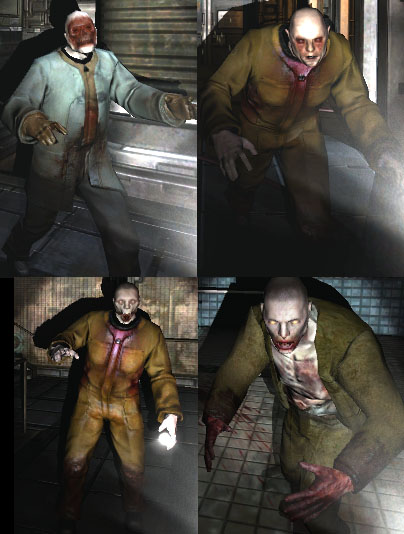 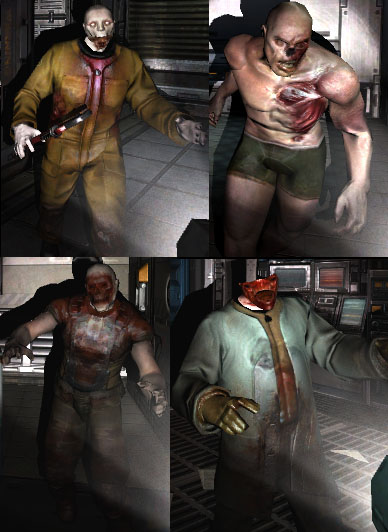 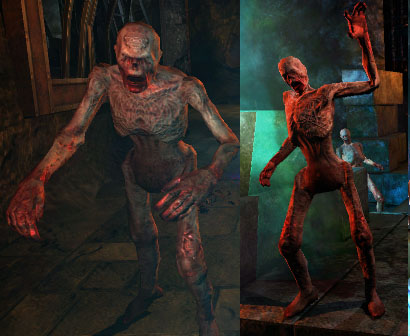 |
| Fat Zombie | 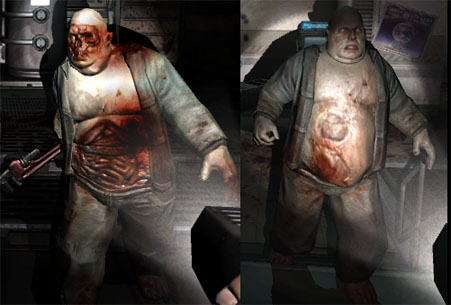 |
| Chainsaw Zombie | 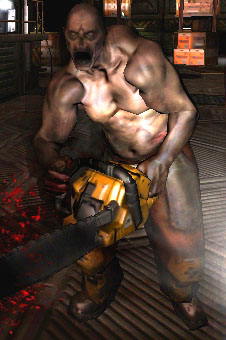 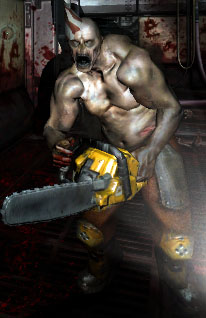 |
| Z-Sec Zombie | 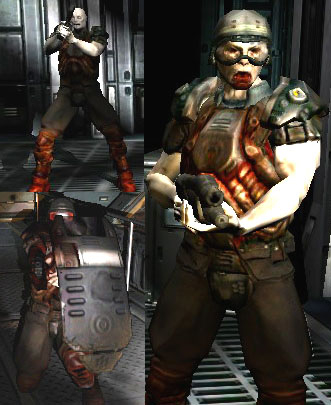 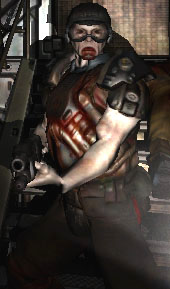 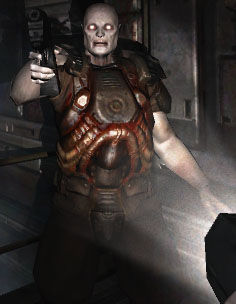 |
| Flaming Zombie | 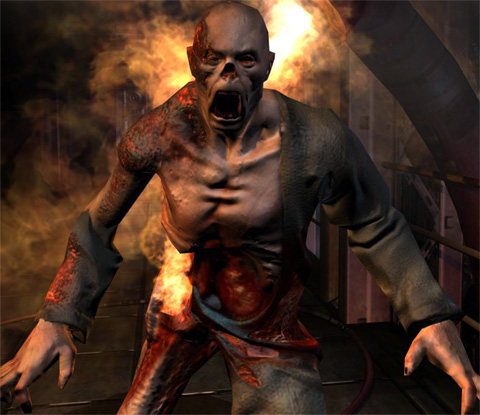 |
| Commando | 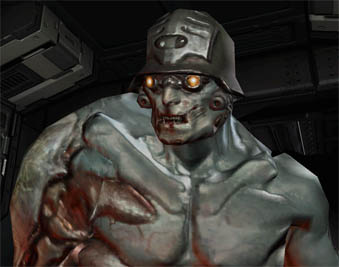 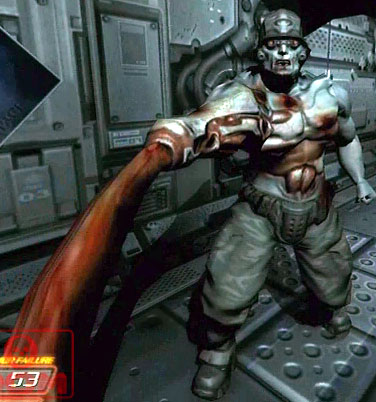 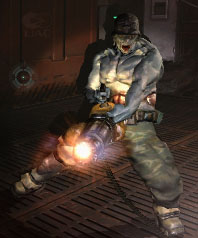 |
| Trite | 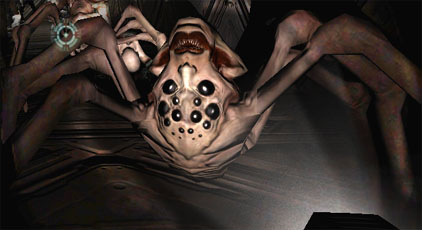 |
| Tick |  |
| Cherub | 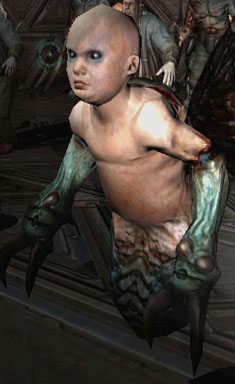 |
| Imp | 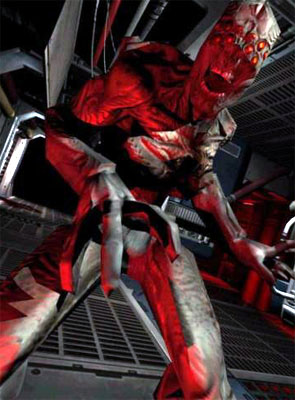 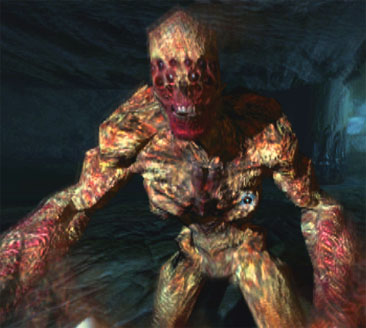 |
| Pinky |  |
| Lost Soul | 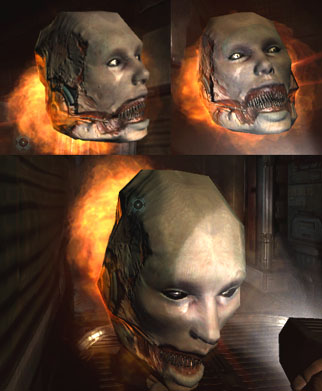 |
| Cacodemon | 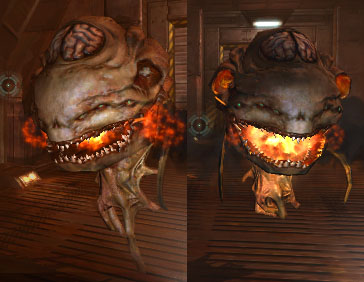 |
| Hell Knight | 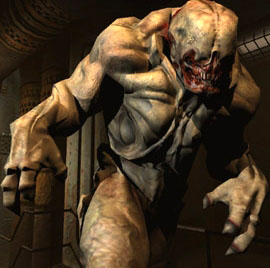 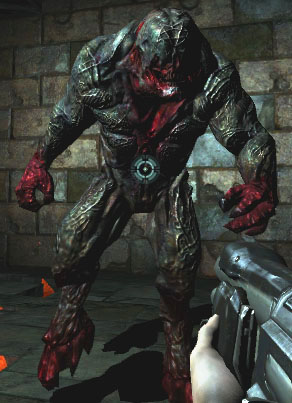 |
| Mancubus | 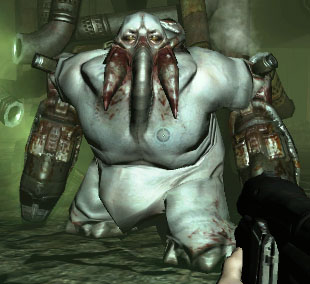 |
| Revenant | 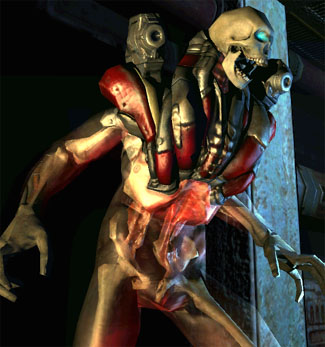 |
| Arch Vile |  |
| Maggot | 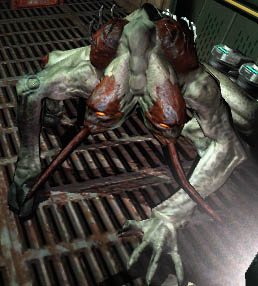 |
| Wraith | 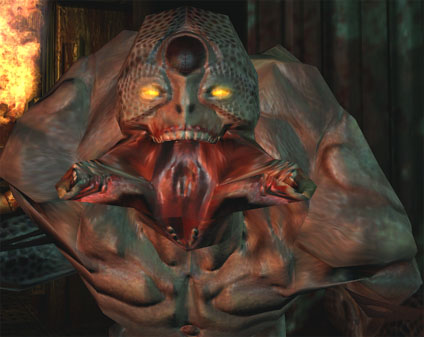 |
| Vagary (Boss) | 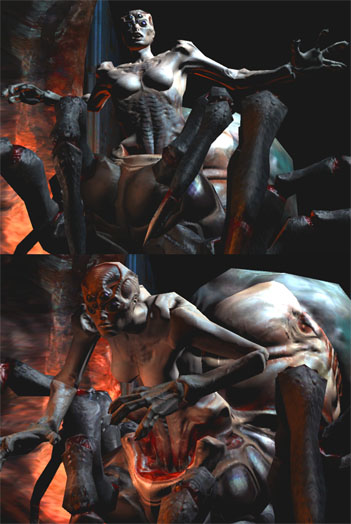 |
| Guardian (Boss) |  |
| Sabaoth (Boss) | 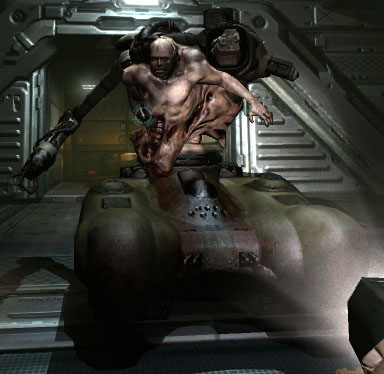 |
| Cyberdemon (Boss) | 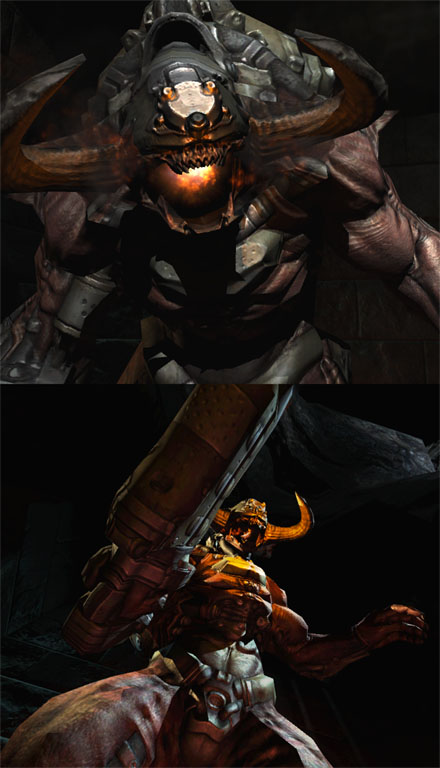 |
| Unknown (Not an enemy) |  |
| Arch Vile?/ Something Else? (Not in game) | 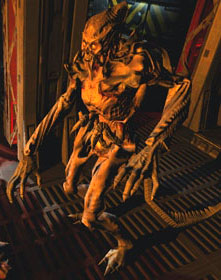 |
| Birdie (Not in game) | 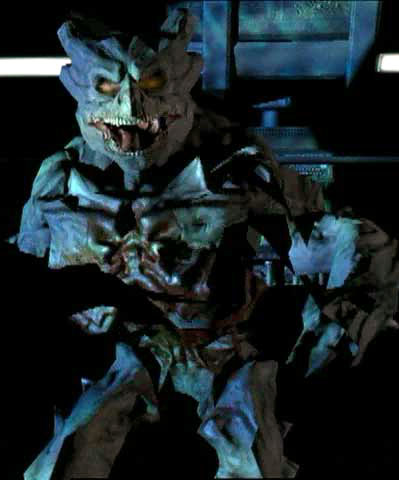 |
Humans
| Doom Guy | 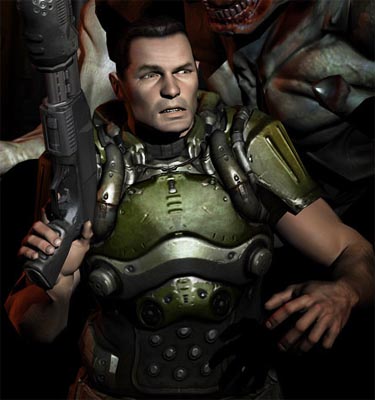 |
| Dr. Betruger | 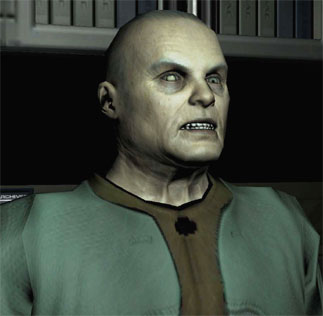 |
| Elliot Swann | 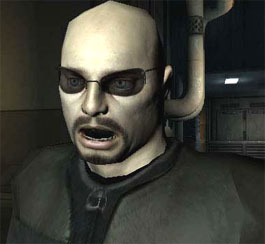 |
| Campbell | 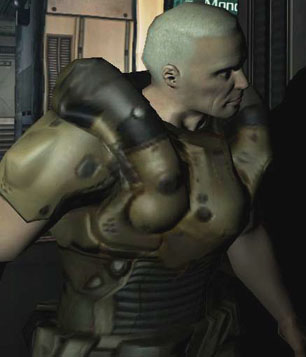 |
| Sgt. Kelly |  |
| Marines | 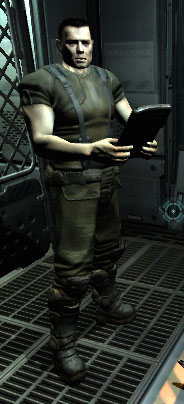 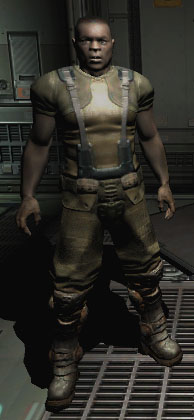  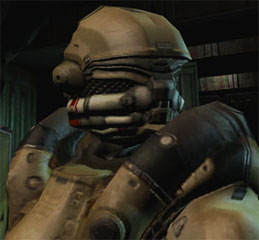 |
| Scientists | 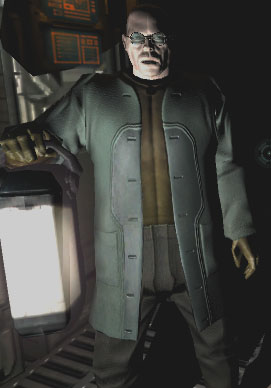 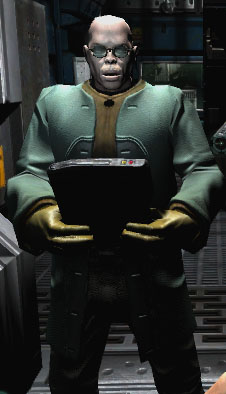 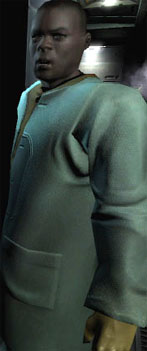 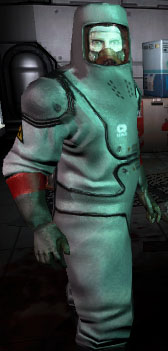 |
| Z-Sector | 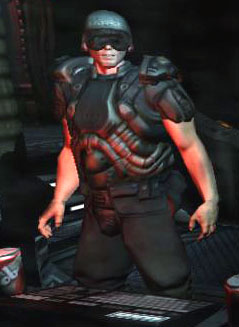 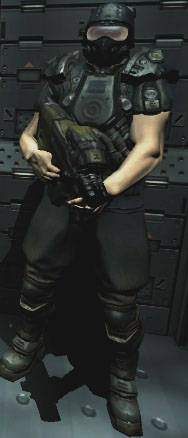 |
| Maintenance Techs | 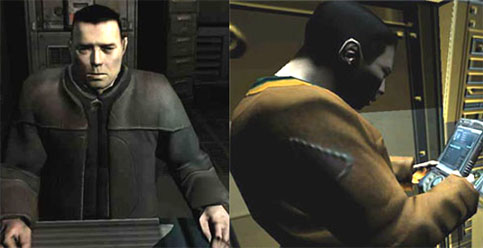 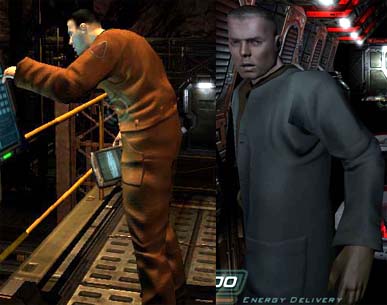 |
| Theresa Chasar | 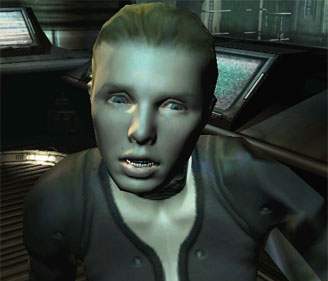 |
| Sentry Bot | 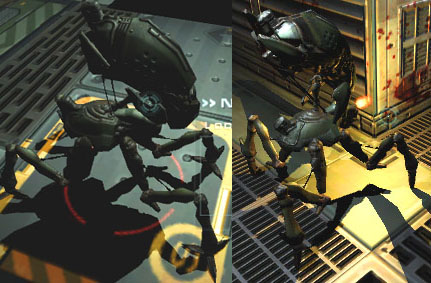 |
Weapons
| Fists | 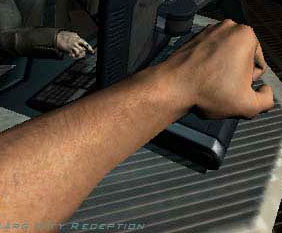 |
| Pistol | 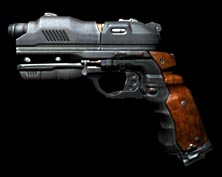 |
| Shotgun |  |
| Machine Gun | 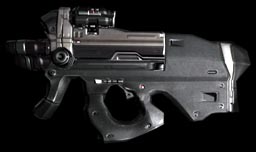 |
| Chaingun |  |
| Rocket Launcher | 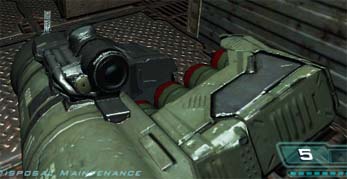 |
| Plasma Rifle | 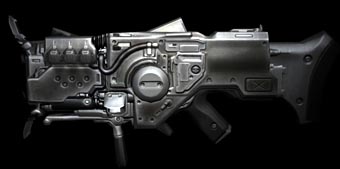 |
| BFG 9000 | 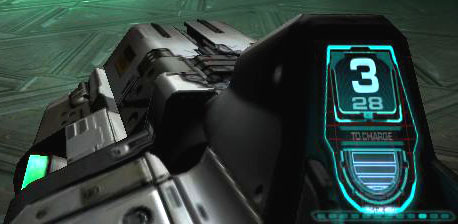 |
| Soul Cube | 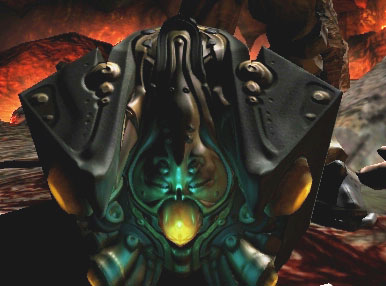 |
| Chainsaw | 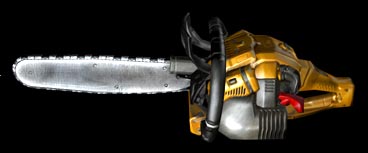 |
| Flashlight | 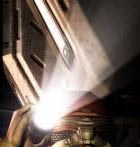 |
| Grenades | 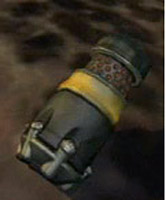  |
Items and Pickups
| Unsorted and unfinished at the moment | 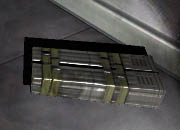 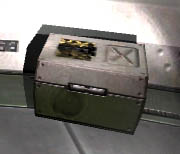 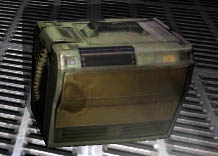 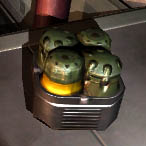 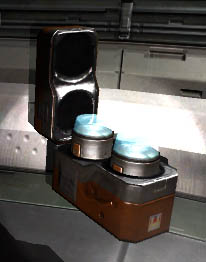 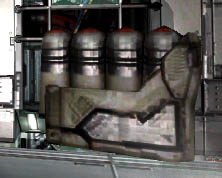 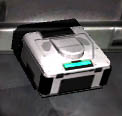 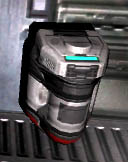  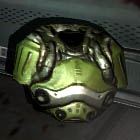 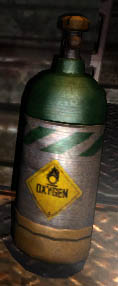 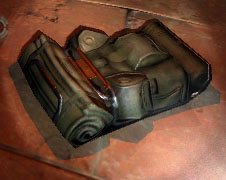 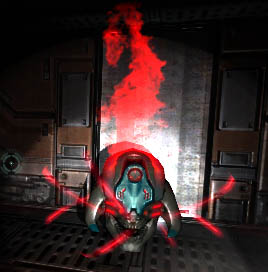 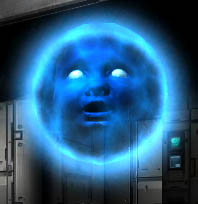 |
Concept Art
| Arachnotron?/ Spider Mastermind? (Not in game) | 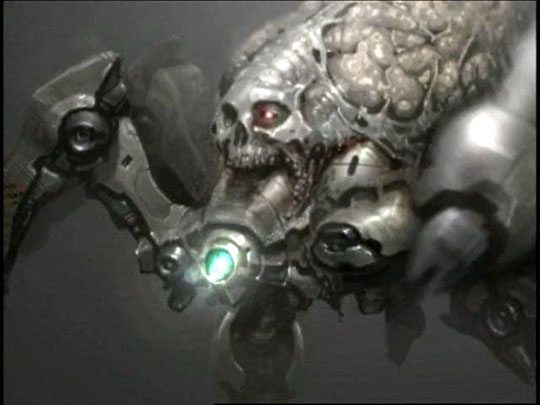 |
Confirmed Enemies, Weapons, and Items Weapons: Fists Chainsaw Pistol Shotgun Machine Gun Chain Gun Grenades Rocket Launcher Plasma Gun BFG-9000 Soul Cube Flashlight Items: Air Canister Armor Shard Backpack Data Control Panel Data Linker Key Card Med. Kit (Large and Small) PDA Plasma Inducer Security Armor Video CD Zombies: Fourteen generic zombies, plus four with additional variations: Headless, with a severed limb, with a flashlight, and with a wrench Chainsaw Zombies Commando Zombies, tentacle and chaingun Fat Zombie, unarmed or wielding a wrench Flaming Zombie Z-Sector Zombies with machine gun, pistol, shield, and shotgun Demons: Arch Vile Cherub Cacodemon Hell Knight Imp Lost Soul Maggot Mancubus Pinky Revenant Tick Trite Wraith Bosses: Vagary Sabaoth Guardian of Hell Cyber Demon |
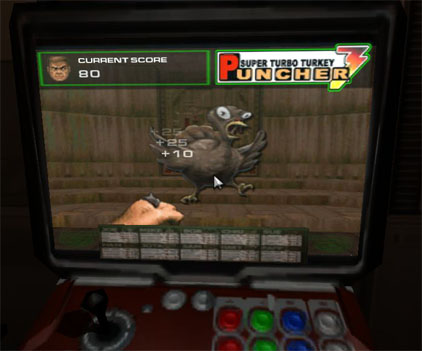 Source;nextdimension.org
Source;nextdimension.org



